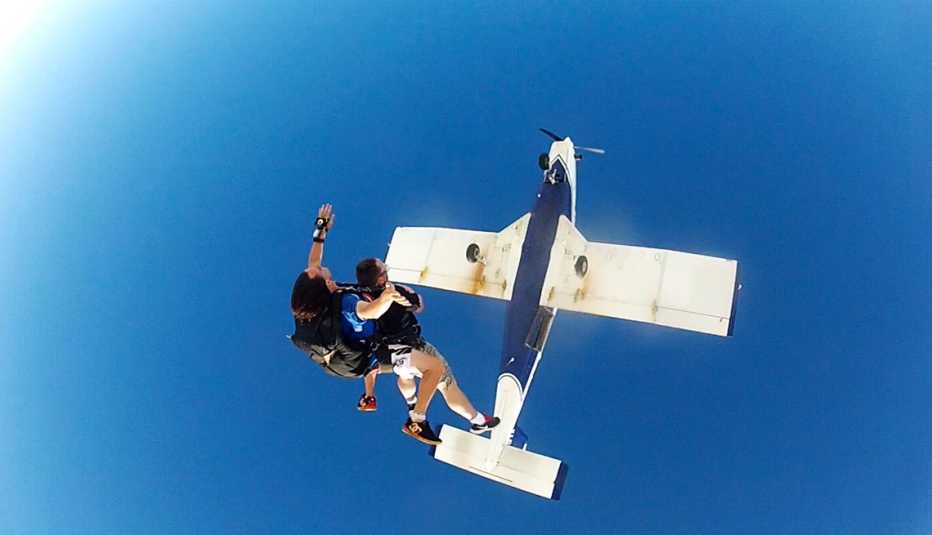Staying Fit


Everything in my body screams, “Don’t do it!” I am about to jump out of an airplane, so my breath grows short; the distinct thud of my heartbeat is pounding in my ears. A thin, cool breeze blows in my face, an undeniable reminder that nothing separates me from the ground 15,000 feet below. My hands, resting at my sides, seem to have a mind of their own, moving to grab the sides of this wide-open door and thrust me back from the edge and into the safety of this small propeller craft.
A couple hundred kilometers in a camper-van driving across Queensland, Australia, have brought me to this precipice, outfitted in a flight suit and parachute. Jump? The abyss awaits. All others on this skydiving adventure have made the leap; I am last. Hesitation keeps me in place, until the dive instructor strapped to my back says firmly in his Aussie accent, “Are you ready?” I’m not. But in just a few moments, I’ll be dropping like a stone, engaged in a strange midair wrestling match over my eyeglasses.
Time to walk the talk
One of the ultimate thrill-seeking experiences, skydiving is a feat about which I regularly talked a big game: “Oh, I’ve always wanted to do that,” I’d say in casual conversation, when talk turned to adventure travel experiences. Truth be told, I hadn’t come to Australia’s lush tropical rainforest to plummet from a plane. I was born with a healthy fear of heights. For me, even a high-altitude hike would raise adrenaline levels, and more than once I can recall getting dizzy just stepping to the edge of a hotel balcony.
Skydiving, however, is in a class by itself. Jumps typically reach a velocity of about 120 mph but can accelerate to 200 mph if the diver isn’t in a spread-eagle position. A typical drop is almost three miles, straight down.
When we do something thrilling, a few things happen in our bodies, a natural reaction developed over the millennia, says Kenneth Carter, M.D., the author of the 2019 book Buzz!: Inside the Minds of Thrill-Seekers, Daredevils, and Adrenaline Junkies. “As you can imagine, there are some evolutionary advantages to getting your body prepared to fight, flee or freeze during stressful situations,” he says.
Research has shown that thrill-seekers generally experience less stress and anxiety in their lives, he adds. A study from the University of California, Berkeley took and analyzed saliva samples from students. “They discovered those who experienced the awe of a thrilling experience had lower levels of the chemical that promotes inflammation,” he says.
What’s more, says Kayt Sukel, author of The Art of Risk: The New Science of Courage, Caution, and Chance, reasonable risk-taking is good for us. “It helps the brain learn new things. Think about it: How do we learn much of anything?” she asks. Of course, not everyone needs to engage in adventure sports to get these benefits. “For some, healthy risk-taking may be trying a new entrée at your favorite restaurant,” she says.



































































You Might Also Like
Teaching English to Immigrants Changed Her World
In this 'Life's a Journey' essay the writer finds different perspectives and genuine connections
AARP Smart Guide to Travel
We cover everything from trip planning and flights to street smarts and staying healthy
More Members Only Access
Watch documentaries and tutorials, take quizzes, read interviews and much more exclusively for members